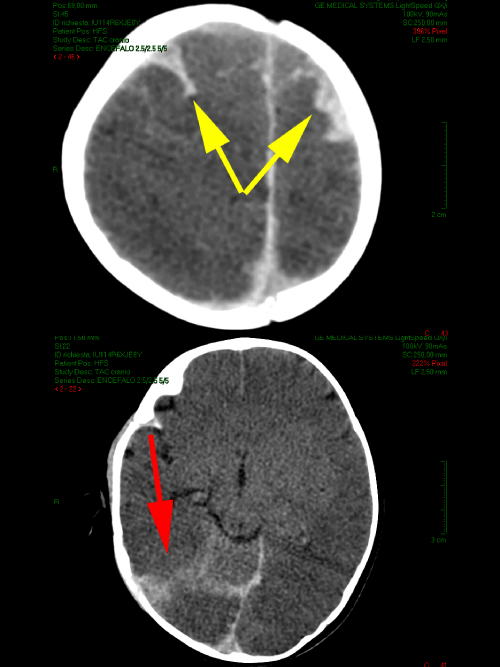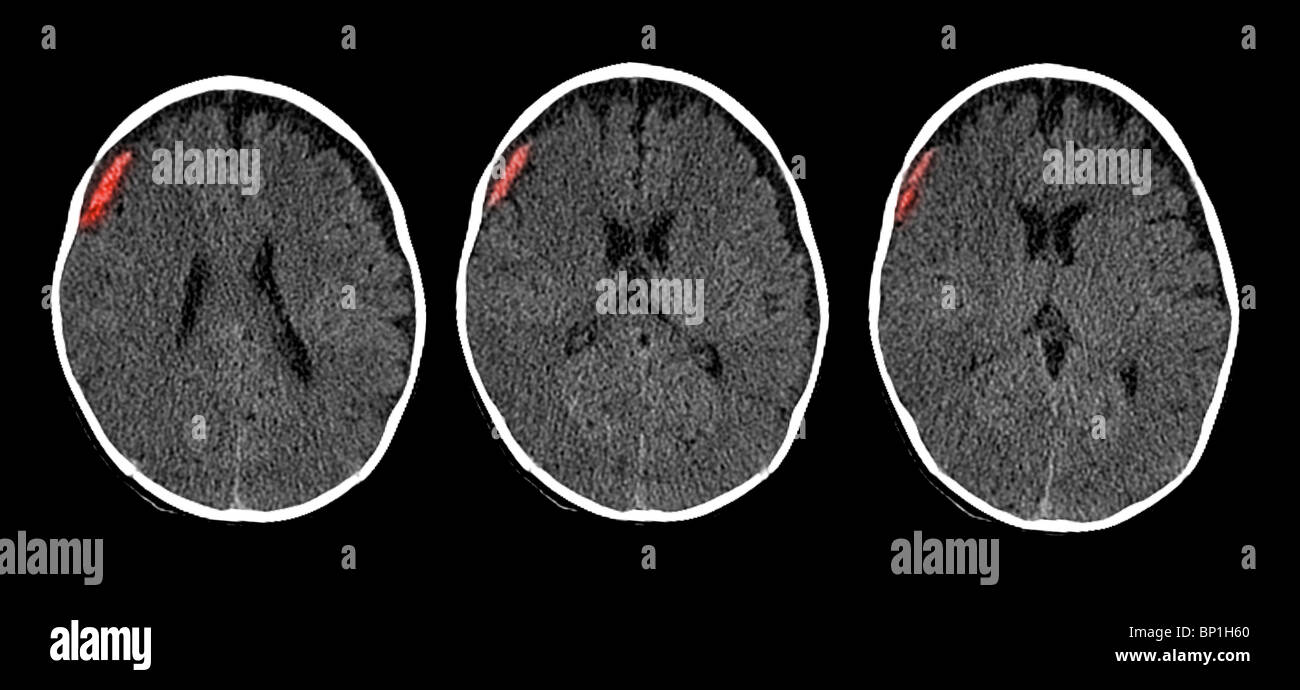Subdural Hematoma Shaken Baby Syndrome
Subdural hematoma shaken baby syndrome. In juveniles an arachnoid cyst is a risk factor for subdural hematoma. In 1971 Guthkelch hypothesized that subdural hematomas could be caused by manually shaking an infant without the head impacting any surface. During injury the blood vessels around the brain can tear and form a pool of blood between the dura and arachnoid membranes.
Bandak Department of Neurology A1036 F. Shaken Baby Subdural Hematoma. Editor Aug 20 2017.
If related to birth trauma symptoms seizures tense fontanel anisocoria and respiratory distress usually occur within 12 hours. The parents were given an apology by. These lesions associated with femoral metaphyseal spurs could be confused with nonaccidental injury such as that seen in the shaken baby syndrome.
Edward Hebert School of Medicine. It should be suspected in all children younger than one year of age who present with drowsiness coma seizures or apnoea. Subdural hematoma may also be the result of common birth trauma complicated by prenatal vitamin D deficiency which also contributes to the appearance of long bone fractures commonly associated with child abuse.
Shaking can cause brain injury cerebral palsy blindness hearing loss learning and behavior problems seizures paralysis and death. This is called a subdural hematoma. The shaken baby syndrome SBS or shaking trauma describes the occurrence of subdural hematoma retinal hemorrhage and diffuse injury to the brain by vigorous shaking of an infant that has a poor prognosis.
These forces if present would invariably cause neck trauma which is conspicuously absent in most babies allegedly injured by shaking. Subdural hematoma may occur as a result of birth trauma but is also common with shaken baby syndrome when the veins that bridge the dura are torn or acceleration-deceleration forces tear cortical arteries. None of these patients developed chronic subdural hematoma.
El shaken baby syndrome SBS o síndrome del niño sacudido SBS es una forma de abuso físico caracterizada por una constelacion de signos clínicos que incluyen la presencia de un hematoma subdural o subaracnoideo o un edema cerebral difuso y hemorragias retinianas en ausencia de otras muestras físicas de lesión traumática. The most common clinical presentations were seizure retinal hemorrhage and consciousness disturbance.
Chronic subdural hematoma and long bone fracture in chil-dren should be a red flag for child abuse.
These forces if present would invariably cause neck trauma which is conspicuously absent in most babies allegedly injured by shaking. Bandak Department of Neurology A1036 F. During injury the blood vessels around the brain can tear and form a pool of blood between the dura and arachnoid membranes. One year later Caffey alluded in a paper describing fiparent-infant traumatic stress syndromefl PITS to manual shaking causing intracranial injury in the form of subdural. It should be suspected in all children younger than one year of age who present with drowsiness coma seizures or apnoea. To describe the role of ophthalmologists in shaken baby syndrome evaluation. None of these patients developed chronic subdural hematoma. This is called a subdural hematoma. El shaken baby syndrome SBS o síndrome del niño sacudido SBS es una forma de abuso físico caracterizada por una constelacion de signos clínicos que incluyen la presencia de un hematoma subdural o subaracnoideo o un edema cerebral difuso y hemorragias retinianas en ausencia de otras muestras físicas de lesión traumática.
The children who survive being shaken often have permanent damage. To describe the role of ophthalmologists in shaken baby syndrome evaluation. This often happens in a desperate rage when the baby keeps crying and cant be calmed or soothed. This is called a subdural hematoma. These lesions associated with femoral metaphyseal spurs could be confused with nonaccidental injury such as that seen in the shaken baby syndrome. Shaking can cause brain injury cerebral palsy blindness hearing loss learning and behavior problems seizures paralysis and death. Bandak Department of Neurology A1036 F.






































Post a Comment for "Subdural Hematoma Shaken Baby Syndrome"